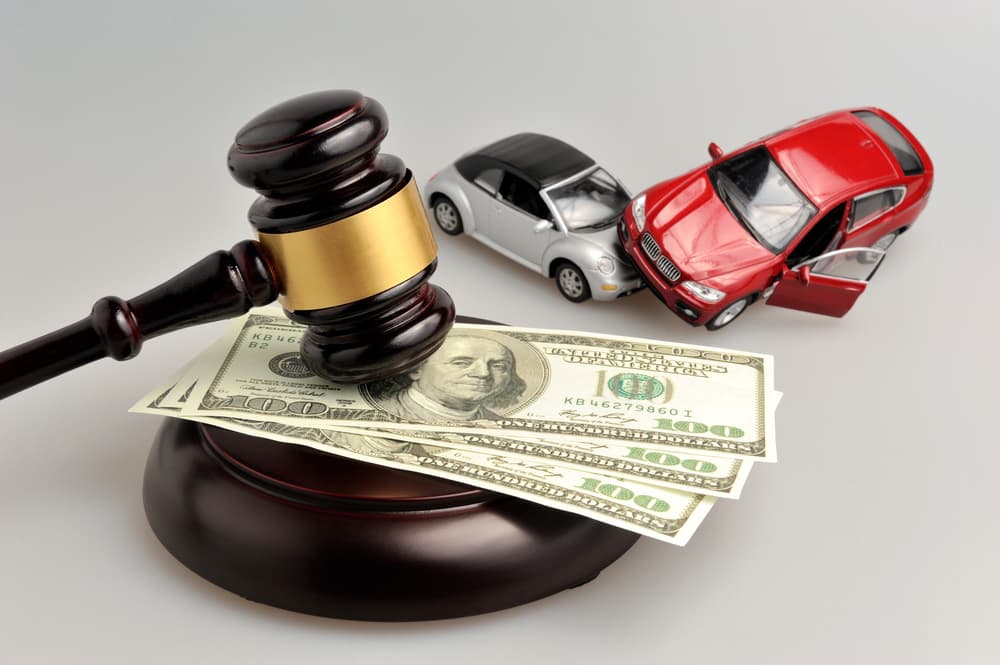Following a car accident, several important details heavily impact your car accident claim, including the fault laws in your state. Understanding the concept of no-fault claims is crucial for drivers and insurance companies.
Navigating a car accident claim can be particularly challenging, especially for the inexperienced. Seeking legal guidance from a skilled car accident attorney can help ensure you receive the support you need while a legal advocate protects your rights and pursues fair compensation for your losses.
Origins and Purpose of No-Fault Insurance

The concept of no-fault insurance was introduced to address issues with traditional fault-based systems, such as delays in compensation and the high costs associated with litigation.
The first no-fault insurance law was enacted in the 1970s in Massachusetts, and other states gradually adopted similar legislation over the following decades.
The primary objectives of no-fault insurance include:
- Prompt compensation: Ensuring injured parties receive compensation quickly, typically through their insurance providers, rather than waiting for a fault to be determined and a settlement to be reached.
- Reduced litigation: Minimizing the need for lawsuits to determine fault, thereby reducing legal costs and backlog in the court system.
- Cost control: Controlling the overall costs associated with auto accidents by providing more predictable compensation and reducing legal fees.
Although the no-fault system has many benefits, only 12 states, including Florida, New Jersey, and Utah, operate under it today. While California is not one of them, the state does allow insurers to sell optional no-fault MedPay policies with more limited benefits than PIP.
Understanding No-Fault Car Accident Claims
If you’re involved in a collision in a no-fault state or you carry MedPay, you need a lawyer who understands what that means.
A no-fault car accident claim refers to a system where each party involved in an accident is compensated by their insurance company, regardless of who was at fault. The no-fault system aims to streamline the claims process, reduce litigation, and ensure injured parties receive prompt compensation without proving fault.
In no-fault states, accident victims turn to their own personal injury protection (PIP) insurance to cover at least a percentage of their economic damages, including medical expenses and lost income. Typically, PIP insurance does not cover non-economic damages, including pain and suffering or mental anguish.
Like almost all other states, no-fault states require drivers to carry certain minimum insurance. For example, in Florida, drivers must carry at least $10,000 in personal injury protection insurance and $10,000 in property damage liability insurance. It means that, in an accident, a victim can pursue a maximum of $10,000 in reasonable medical expenses, and $10,000 is available for damage to another person’s vehicle caused by the insured or someone driving the insured’s vehicle.
Of course, drivers are free to purchase higher insurance coverage and additional types of insurance as long as they meet the minimum insurance requirements.
Usually, drivers in no-fault states have no right to sue the driver at fault for the collision. Instead, they must seek financial recovery from their PIP insurance. However, if a victim’s injuries are severe and their related expenses exceed insurance limits, what then? In a situation like this, no-fault states commonly allow victims to sue at-fault drivers for additional compensation.
To have a right to sue, it’s necessary to turn to state law. For example, in Florida, victims are only allowed to file a personal injury lawsuit if their injuries are “severe,” as defined by the law. It includes physical conditions that create a substantial risk of death or disfigurement.
You must seek legal assistance immediately if you’re involved in an auto collision in a no-fault state. While the no-fault system seems foolproof and simple to handle, situations vary, and you want to ensure you receive the compensation you’re owed.
How No-Fault Accident Claims Work
After an accident, you’re usually expected to exchange information with the other driver, including insurance information. In no-fault states, you don’t necessarily need to exchange auto insurance information; you don’t need to go through the other driver’s insurance to pursue compensation.
Instead, in states where no-fault insurance laws apply, drivers must submit their claims through their personal injury protection insurance.

Following a collision, contact your insurance company. While you don’t need to call your insurer from the accident scene, you only have a limited time to notify them of your accident. Contact your auto insurer as soon as possible to ensure you don’t miss your opportunity to file a claim.
When you speak with an insurance representative, they’ll walk you through initiating your claim. They’ll ask several questions about your accident to include in your claim, including those involving time, place, and resulting injuries and property damage.
Once you open your claim, you will have an insurance adjuster assigned to your claim.
The insurance adjuster plays a vital role in the claims process. Adjusters take care of several key details, including investigating your accident and facilitating repairs for your vehicle.
The insurance adjuster will determine whether to approve or deny your claim based on their findings. If they approve your claim, they’ll notify you how much the insurance company will pay out for your claim, whether policy limits or otherwise.
When the insurance company approves your claim and settles fairly, you’ll receive compensation and do not need further action. Depending on the severity of your injuries and losses, this may be the time to consider suing the at-fault driver for additional compensation should you meet your state’s requirements for filing a personal injury lawsuit.
Accident victims benefit from consulting with a personal injury lawyer at any point throughout the claims process. Whether the insurance company denies your claim or is unwilling to settle fairly, or you need to file a lawsuit, an attorney can take on your case to protect your best interests.
Pros and Cons of a No-Fault Insurance System
Like most other things in life, there are several advantages to a no-fault insurance system, but there are also some downfalls.
Among the benefits of no-fault insurance, some of the most notable include:
- Efficiency: Because fault does not need to be determined, claims are usually processed more quickly.
- Coverage for medical expenses: PIP insurance provides almost immediate coverage for medical treatment without waiting for a liability determination.
- No lengthy legal battles: Since fault isn’t a factor in no-fault accidents; victims can obtain compensation without having to go through litigation.
Some of the disadvantages of the no-fault system include:
- Limited compensation: PIP coverage may not fully compensate for all damages, especially in severe injury cases.
- Fraud: The no-fault system may be more susceptible to fraudulent claims due to the reduced emphasis on fault determination.
- Complexity: No-fault laws vary by jurisdiction, leading to potential confusion for drivers who move between states.
No no-fault model is perfect. If you live in a no-fault state, you must take the positives with the negatives and hire a lawyer who understands how your state’s system operates.
No-Fault vs. At-Fault Accidents: What’s the Difference?
A small number of states are no-fault, meaning most U.S. states operate under an at-fault system. But what is the difference between the two?
No-fault systems operate without fault determinations to pay out for claims. In contrast, fault-based systems require determining which party was responsible for the accident before compensation is paid. It often involves a lengthy claims process and may result in litigation if the fault is disputed.

Insured drivers do not carry personal injury protection insurance in a no-fault state. Instead, drivers must have liability insurance that meets state requirements.
For example, under California law, drivers must carry at least $15,000 coverage for injury/death to one person, $30,000 for injury/death to more than one person, and $5,000 for property damage.
Insurance limits mean something different in at-fault states. Because it is liability insurance, policy limits represent what is available for coverage of another driver’s damages. So, for instance, if you’re involved in a collision with a driver carrying California minimum liability insurance, the insurance company would pay up to $15,000 for your medical expenses and up to $5,000 for property damage. In fault states, you can pursue compensation for economic and non-economic damages.
No-fault and at-fault states operate differently, and figuring out how to properly pursue financial recovery for your collision can be challenging. When you’re involved in a car accident and need guidance concerning your insurance claim, seek help from a local personal injury lawyer.
At-Fault Car Accident Claims
If you suffer harm in an at-fault state, you can seek compensation from the responsible party’s insurer. Still, at-fault insurance systems require focus on certain details, like cause and fault, which can heavily influence the outcome of your claim.
What Constitutes an At-Fault Car Accident?
An at-fault car accident occurs when one driver is deemed responsible, either fully or partially, for causing the collision and its consequences. This determination is typically made based on negligence, which means failing to exercise reasonable care.
Some of the most common scenarios where a driver may be considered at fault include:
- Speeding
- Distracted driving
- Impaired driving
- Failure to yield the right of way
- Unsafe turns and lane changes
- Fatigued driving
- Violating road rules
Dangerous driving behaviors are one of the most common causes of auto collisions. When a driver’s wrongful actions result in a car accident, you can hold them accountable and pursue compensation through their insurance.
Determining Fault for a Collision
Determining fault in a car accident involves a thorough investigation by insurance companies, law enforcement agencies, and sometimes, car accident attorneys. It is essential to determine how the collision occurred and if another driver caused the accident; evidence can help establish liability.
Substantial evidence is often utilized to successfully prove a driver’s fault for a collision, including, but not limited to:
- Photographs: Photos of the accident scene, vehicle damage, and road conditions can help exhibit the consequences of the crash and reconstruct the events leading up to the collision.
- Police report: Law enforcement officers who respond to the accident scene will often document their findings in a police report, which can serve as vital evidence of fault.
- Witness testimony: Statements from individuals who witnessed the accident firsthand can provide valuable perspectives on what occurred.
- Traffic violations: If law enforcement issued any citations for traffic violations, this can be used as evidence of the driver’s wrongdoing that caused the collision.
In at-fault states, establishing fault is critical. Your lawyer can assist with gathering pertinent evidence to strengthen your claim and help get you the compensation you need.
Pursuing Compensation for an At-Fault Accident
Insurance claims in at-fault states vary from no-fault states. You file a first-party claim through your insurance company in a no-fault state. On the other hand, in a fault state, you will file a third-party insurance claim through the at-fault driver’s insurer.

Get the other driver’s insurance information at the accident scene, as you’ll need it for your claim. Contact the other driver’s insurer to initiate your claim. Once you’ve started your claim, the insurance company will assign an insurance adjuster to investigate the accident and resulting consequences and make critical determinations.
If the insurance company approves your claim, they’ll provide a settlement amount to resolve it, which can be up to policy limits. Should the settlement amount suit your needs, you can accept and close out your claim.
However, if the insurance company refuses to settle your claim favorably, you can seek assistance from a personal injury lawyer. Additionally, depending on the extent of your injuries and losses, you may need to file a personal injury lawsuit for more compensation.
Whether You’re in a No-Fault or At-Fault State, Do Not Hesitate to Seek Legal Guidance
Whether in a no-fault or at-fault state, personal injury attorneys can assist with your claims. Navigating both insurance systems can be particularly burdensome, but a knowledgeable car accident lawyer can protect your rights and represent your best interests to get you the compensation you need and deserve.
An experienced car accident attorney can make a significant difference in the outcome of your case.
